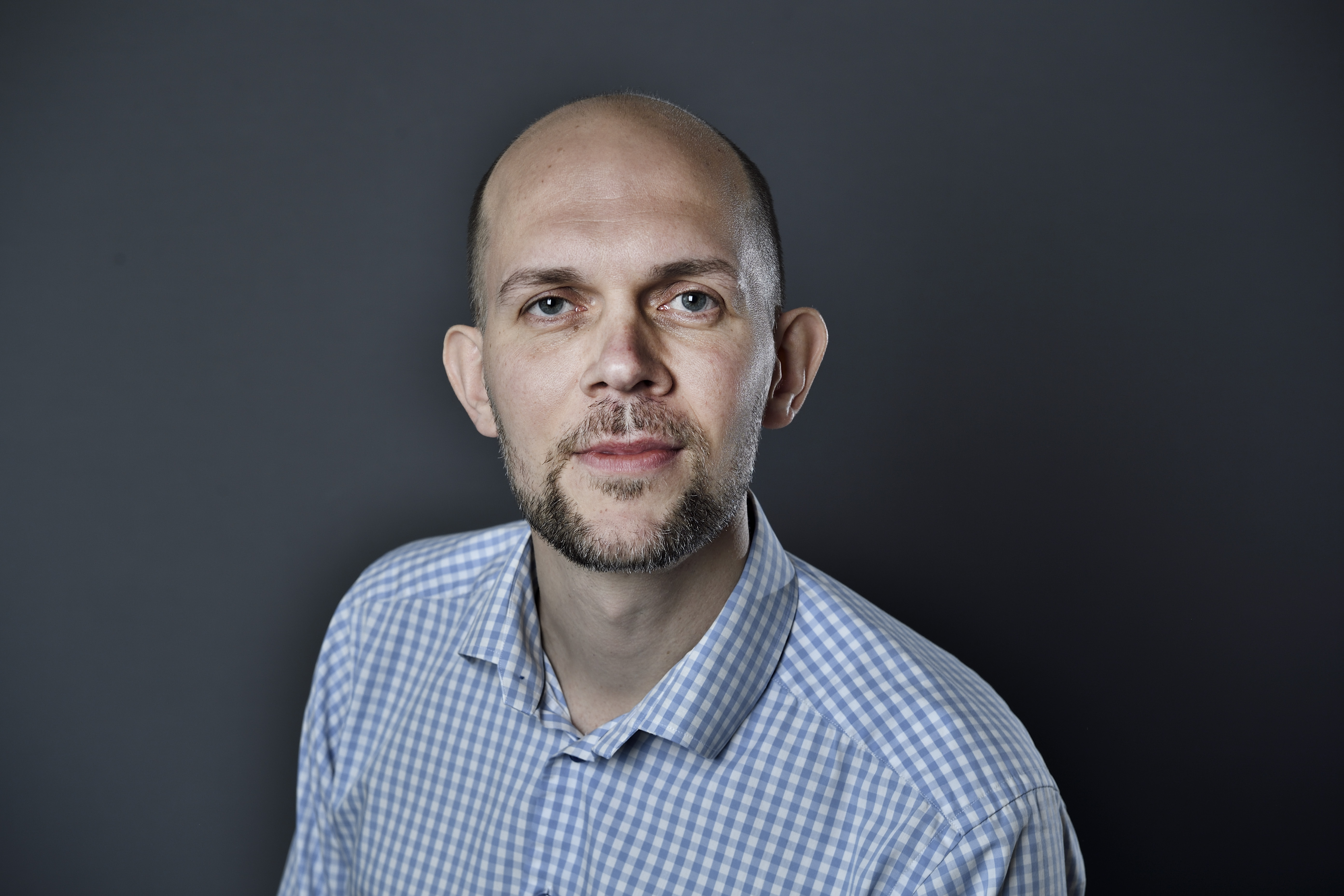Andreas Ingemann Jensen
Research leader

Project title
Nanocarrier delivery of 125I-UdR for Auger radiotherapy of glioblastoma
What is your project about?
The project is about an effective new treatment for glioblastoma – the most aggressive type of brain cancer. It kills most patients within just 2 years, despite advanced modern therapy. A major reason for this is because it is very hard to remove completely. This is due to glioblastoma cells infiltrating healthy brain tissue. Our novel approach seeks out and kills these cells by targeted local radiation therapy. We will do this by designing nanocarriers that can deliver small DNA-like radioactive molecules specifically to the cancer cells. These molecules tricks cancer cells into taking them up, which results in their own DNA being destroyed by a burst of short-ranged electrons. Best of all, this electron burst does not harm neighbouring non-cancer cells. The nanocarriers are necessary to achieve sufficient distribution and subsequent release within the brain, which is not possible with the free compounds alone. The nanocarriers will be designed and developed at DTU Health Tech, while Odense University Hospital (OUH) will take care of the biological testing.
How did you become interested in your particular field of research?
During my pharmacy studies I first became fascinated with drug delivery; how various materials and formulations can make active drugs arrive at the desired sites in the body. During my PhD and later, I coupled nanocarriers with radioactive substances. This sparked a general interest in drug delivery systems for radiotherapy, since it is especially important here that the therapy is only directed at the cancer and avoids healthy tissue. It became clear to me that a combination of radiotherapy and modern drug delivery approaches may be the key to success. This is what I hope will come true in my present research project and in my research in general.
What are the scientific challenges and perspectives in your project?
The most interesting challenges will arise when chemically tuning the release of the radioactive compounds from the nanocarriers. This will be addressed using multiple synthetic strategies. The release of radioactive compounds will need to work in combination with the distribution time of the nanocarriers within the brain, to ensure their availability in the proper phase of the cancer cell reproductive cycle. Nanocarriers will be designed to release the compounds through both enzymatic action and injection of activator compounds. Since we do not quite know yet how fast this needs to be, determining the optimal timing of these steps constitutes a particularly interesting aspect of our project. Success in creating the appropriate drug delivery system for the therapeutic DNA-like molecules will pave the way for a more effective treatment of aggressive brain cancer.
What is your estimate of the impact, which your project may have to society in the long term?
In Denmark alone, about 300 people are diagnosed with glioblastoma annually. Significantly improved therapy is of great importance to affected patients and their kin. Particularly positive results from animal studies in Odense suggest that a substantial improvement can be achieved in humans by nanoparticle-mediated cancer cell targeting, without the serious side effects and lack of efficacy of conventional cancer therapy. The nanocarriers we intend to develop can in the long-term be prepared and used at local hospitals, but also shipped over long distances, meaning that it can benefit patients at an international scale. This novel therapeutic principle can also be further developed for use in other cancers, meaning that the societal long term aspects are very significant in terms of positive new opportunities for the burgeoning Danish radiopharmaceutical industry and substantial savings for the hospital sector.
Which impact do you expect the Sapere Aude programme will have on your career as a researcher?
The Sapere Aude grant will first and foremost provide me with a great opportunity to contribute to the treatment of brain cancer and achieve exceptional results within this area together with my collaborators. Apart from that, the highly interdisciplinary aspect of this project has already significantly expanded my network. This is particularly evident in the new strong bond between DTU and OUH that this project has helped to solidify, which I hope will enable my own current and future ability to design and develop drug delivery systems that will eventually see use in patients. The grant will also make it possible for me to expand my own group and general operations, which will further my ability to successfully conduct larger projects and make more of my own ideas come to fruition.
Background and personal life
I currently live in Virum north of Copenhagen with my Spanish wife and two kids. Since my kids are still small, most of the time not spend on science is currently spend with them. In the rather limited spare time I do have, I enjoy trying to do some casual exercise, taking walks in the woods, eating as many plants as I can, and seeing my friends.
View all research leaders here
Research institution
Technical University of Copenhagen, The Hevesy Laboratory, DTU Health Tech
Research field
Radiochemistry / Drug Delivery
City of your current residence
Lyngby-Taarbæk
High school
Rødkilde High School, Vejle
